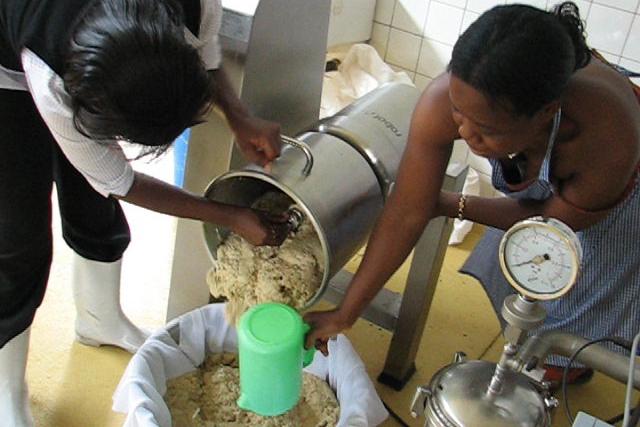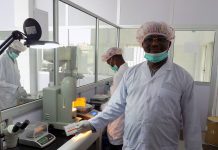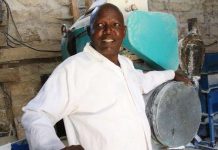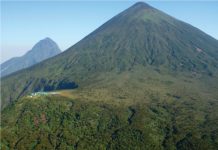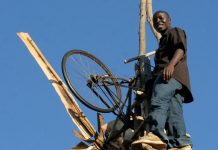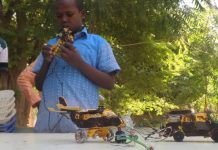(A column highlighting scientific, technological, engineering, and design innovation in Africa)
Tanzanian Oscar Kibazohi Ph.D., a senior lecturer at the College of Engineering and Technology (CoET) at the University of Dar es Salaam, Tanzania, developed a mechanical system to produce a clear juice from ripe bananas. Clear banana juice is difficult to produce because pulping ripe bananas produces a highly viscous puree. once produced, the juice offers a high sugar content alternative to clear apple juice as a base for blends or on its own as a natural, highly nutritious, energy drink.
A thick banana brew is a traditional drink in Burundi, Eastern Congo, Rwanda, Tanzania and Uganda. However, making the brew the traditional way is a struggle in his native village, says Kibazohi.
“They had to step on the fruits as a way of mashing them and the end product was not real juice as it was not that clear,” he is quoted as saying in an online article for Tanzania News Reports.
Kibazohi’s efforts to produce a clear juice began in 1993. Use of a blender proved futile. Further research took him to Uganda to meet the author of an academic abstract on banana juice and to observe local preparation of the same. His observations led him to conclude that bananas that had tannins were appropriate for the drink when mashed well, without being stepped on.
Kibazohi’s innovative juicing system, which evolved from his observations in Uganda, allows him to prepare clear banana juice in just 20 minutes. In the past, far more time is spent stepping on the bananas. Kibazohi’s juicer uses mechanical mashing of bananas without the addition of enzymes or extraction aids to create clear banana juice. It mirrors the traditional process of kneading a mixture of ripe banana and grass or fibers until the juice oozes out from the pulp.
The technology allows for juice-producing banana varieties, which fetch low prices and are being phased out, to be transformed into a more valuable product.
Clear banana juice is being produced at plant in South Africa, under an enzyme-free process using the indigenous banana plant, Pisang awak, developed by Ugandan Apollo Segawa in conjunction with what is now Johannesburg University. The plant, which is operated by Segawa’s company, Exotic Banana Products, also manufactures a range of banana juice blends with mango, orange, granadilla and apple.
Kibazohi, 53, has a degree in mechanical engineering from the University of Waterloo, and obtained his Ph.D. in Canada. He is shortlisted for the 2014-2015 Africa Prize for Engineering Innovation, Africa’s biggest prize devoted to innovation in engineering, conferred by the Royal Academy of Engineering in Britain. The prize, which will be announced later this year, covers all disciplines, from mechanical, civil and computing to biomedical, oil and gas, mining and electronic engineering.


